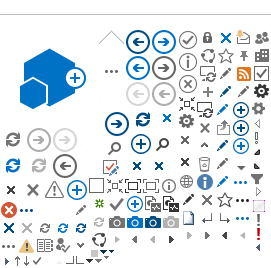ITU-T Study Group 16 - Multimedia coding, systems and applications
This page refers to a previous study period. For its most recent version, please see
here.
Study Group 16 leads ITU’s standardization work on multimedia coding, systems and applications, including the coordination of related studies across the various ITU-T SGs. It is also the lead study group on ubiquitous and Internet of Things (IoT) applications; telecommunication/ICT accessibility for persons with disabilities; intelligent transport system (ITS) communications; e-health; and Internet Protocol television (IPTV).
Multimedia is at the core of the most recent advances in information and communication technologies (ICTs) – especially when we consider that most innovation today is agnostic of the transport and network layers, focusing rather on the higher OSI model layers.
SG16 is active in all aspects of multimedia standardization, including terminals, architecture, protocols, security, mobility, interworking and quality of service (QoS). It focuses its studies on telepresence and conferencing systems; IPTV; digital signage; speech, audio and visual coding; network signal processing; PSTN modems and interfaces; facsimile terminals; and ICT accessibility.
Work highlights
SG16 is home to all media coding work in ITU-T and is home to some very well-known standards following a long tradition of work. This includes narrowband and wideband speech coders, and work carried out together with ISO/IEC's JPEG and MPEG working groups in image and video compression, including JPEG and JPEG 2000 (ITU-T T.80 and T.800 series) and MPEG-2 Video (ITU-T H.262). This collaboration led to the Primetime Emmy award winning Recommendation ITU-T H.264 (or MPEG-4 Part 10 Advanced Video Coding). H.264/AVC remains the most deployed video compression standard worldwide. It is the first truly scalable video codec and continues to deliver excellent quality across the entire bandwidth spectrum – from high-definition television to videoconferencing and 3G mobile multimedia.
Building on the success of this collaboration, the ITU/ISO/IEC Joint Collaborative Team on Video Coding (JCT-VC) was created to develop the successor to H.264/AVC. Known informally as ‘High Efficiency Video Coding’ (HEVC), ITU-T H.265 | ISO/IEC 23008-2 needs only half the bit rate of its predecessor; being designed to accommodate advancing screen resolutions as high-end products and services outgrow the limits of current network and display technology. The JCT-VC continues to work on a range of extensions to HEVC, including the progression of HEVC towards scalable video coding. ITU, ISO and IEC are also working within the Joint Collaborative Team on 3D-Video (JCT-3V) on the extension of HEVC towards stereoscopic and 3D video coding.
SG16 is the origin of a large family of successful videoconferencing systems tailored to several networks: for example, ITU-T H.320 and H.310 for narrow- and broadband ISDN, and H.324 for PSTN and 3rd Generation mobile. ITU-T H.323 – the ITU standard for interoperability in audio, video and data transmissions over IP – is the world’s most widely used voice over IP (VoIP) communication protocol. SG16 is now working on standards for telepresence systems, as well as on future-generation advanced multimedia systems (AMS).
SG16 is responsible for standards enabling IPTV services and terminals, detailed by the ITU-T H.700-series. Some of them – ITU-T H.721, H.761 and H.762 – are already employed by millions of users in Asia. Recent work includes compliance testing specifications for various Recommendations in the H.700 series.
Work is underway on standardized digital signage systems. Proprietary solutions are available, but there is agreement that globally defined solutions have the potential to lower the cost entry point through, for example, the federation of content and reaching wide audiences. A large push for standardized digital signage solutions came after the Great East Japan Earthquake and Tsunami in 2011, as standards-based digital signage systems can be a powerful vehicle for public announcements in the event of public emergencies.
The media gateway protocol family of standards in the ITU-T H.248-series is also used worldwide, especially for NGN. It allows the different functionalities needed for modern IP-based gateways to be added as needed, in modules ("H.248 packages") defined in ITU-T standards; thus maximizing flexibility, scalability and return-on-investment for network operators.
SG16’s work evolves in line with industry needs and the group is currently accelerating its development of standards for e-health, ubiquitous sensor networks (USN), Internet of Things (IoT), home networking, and vehicular gateway aspects of intelligent transportation systems.
Other work includes the V-series modem Recommendations (ITU-T V.34, V.90, etc.), without which the Internet would not enjoy its current state of ubiquity. Anyone accessing the Internet before the advent of ISDN, and then broadband technologies, would have used a modem built according to these ITU specifications. If proprietary standards had been adopted, the Internet's development could well have been far more fragmented. Even today, modems remain a very important way of accessing the Internet and SG16's work to extend the life of modems for transport over next-generation networks (NGNs) is thus very important. Also part of SG 16's heritage is its fax work, including standards for high-speed fax over PSTN, ISDN and IP networks.
